|
||||
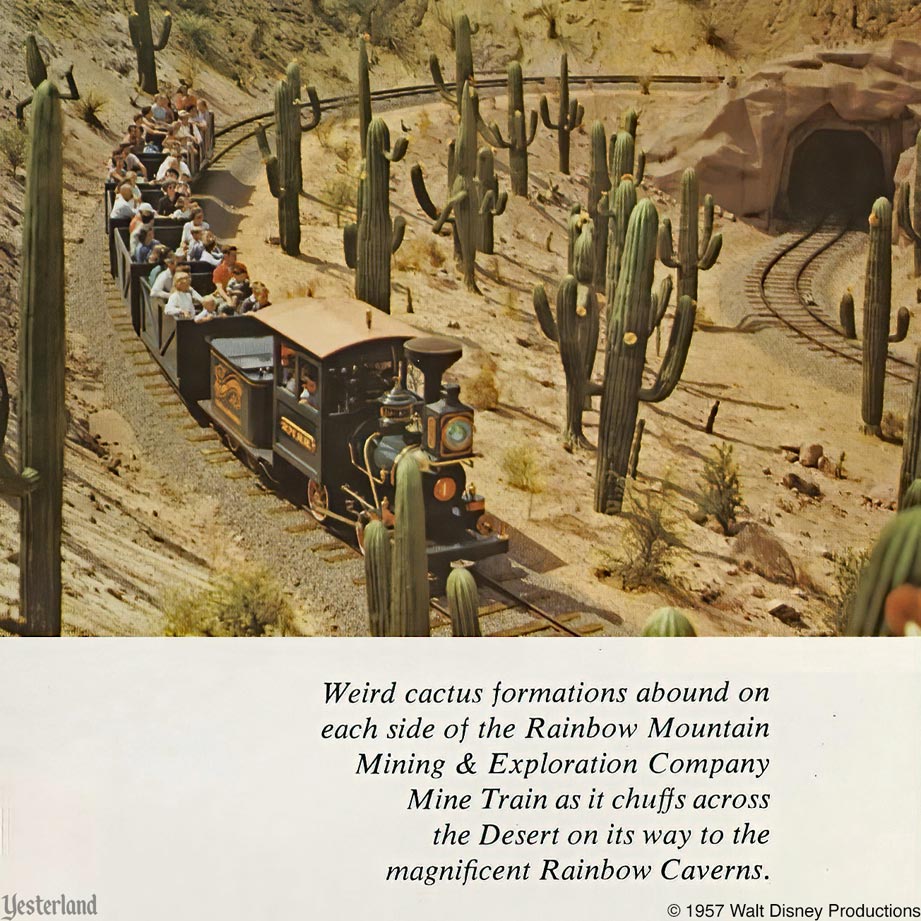
Scan from the 1957 Disneyland guide book © 1957 Walt Disney Productions |
||||
|
Welcome! Perhaps you expected a yellow train and a huge cast of animatronic critters. If that’s what you want, you’ll need to wait until 1960 in exactly the same spot. This is the original version of the ride. Also, this mine train doen’t go into a mine. If that’s what you want, you’ll need to wait until 1960 for the Calico Mine Ride to open at Knott’s Berry Farm. |
||||
|
|
||||
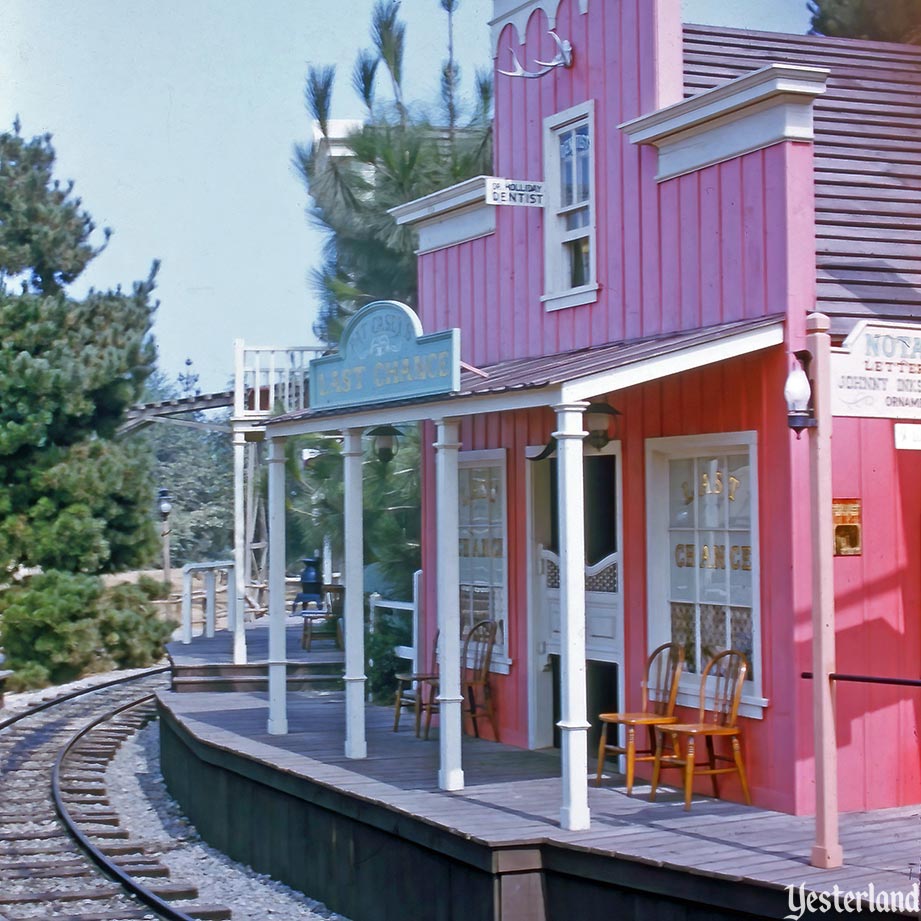
Photo, circa 1958-59 by Ruth Mills, courtesy of David Chapman Pat Casey’s Last Chance Saloon and Dr. Holliday, Dentist |
||||
|
As you wait for the train, admire the little mining town of Rainbow Ridge climbing up the side of Rainbow Mountain. There’s a saloon on the other side of the railroad track. You can’t get yourself a beer there — but you can listen to the raucous sounds coming from it and other Rainbow Ridge businesses. |
||||
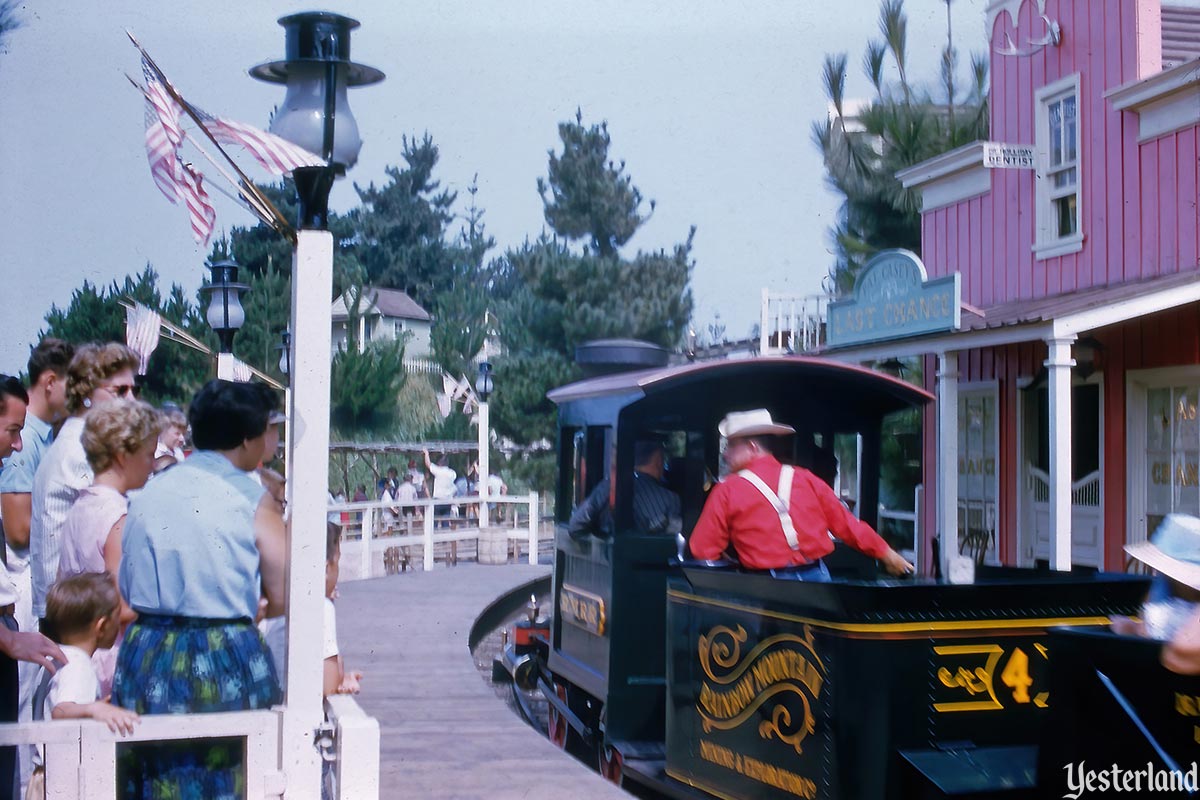
Photo, circa 1958-59 by Ruth Mills, courtesy of David Chapman Loading platform in Rainbow Ridge |
||||
|
A dark green locomotive emblazoned with R.M.R.R. pulls five dark green ore cars up to the loading platform. This is the Rainbow Mountain Railroad. A bench goes around the inside of each ore car. There’s one more seat at each ore car door when it’s closed. You’ll be facing other guests. Let’s hope your head turns well. Take a seat. The ride begins. Although it looks like a steam train, the locomotive is remarkably quiet. That’s because it has an electric motor. The tender car contains rechargeable batteries. Who knew the Old West had such advanced technology? Soon your train is in the Living Desert. |
||||
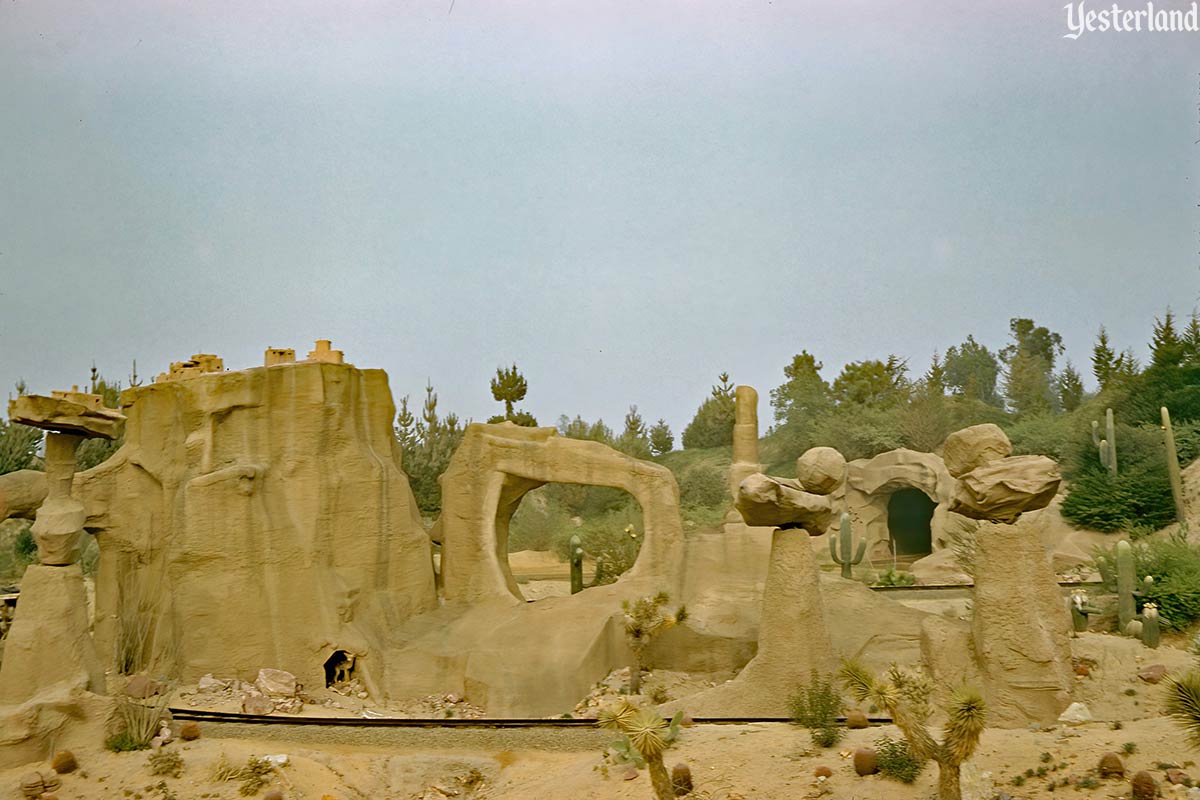
Photo by Merrill A. Garner, 1958, courtesy of M. Scott Garner The desert: hot, arid, and unforgiving |
||||
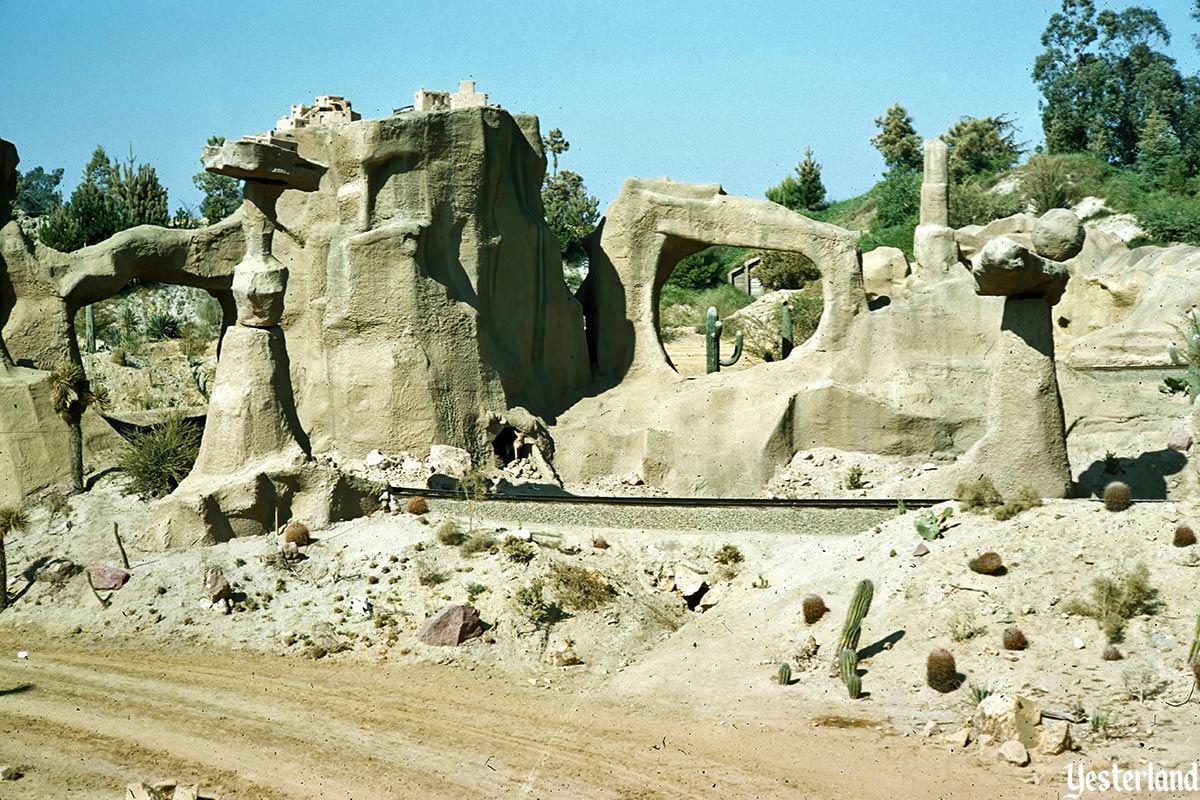
Photo by Charles R. Lympany, courtesy of Chris Taylor Rock formations shaped by millennia of winds and erosion |
||||
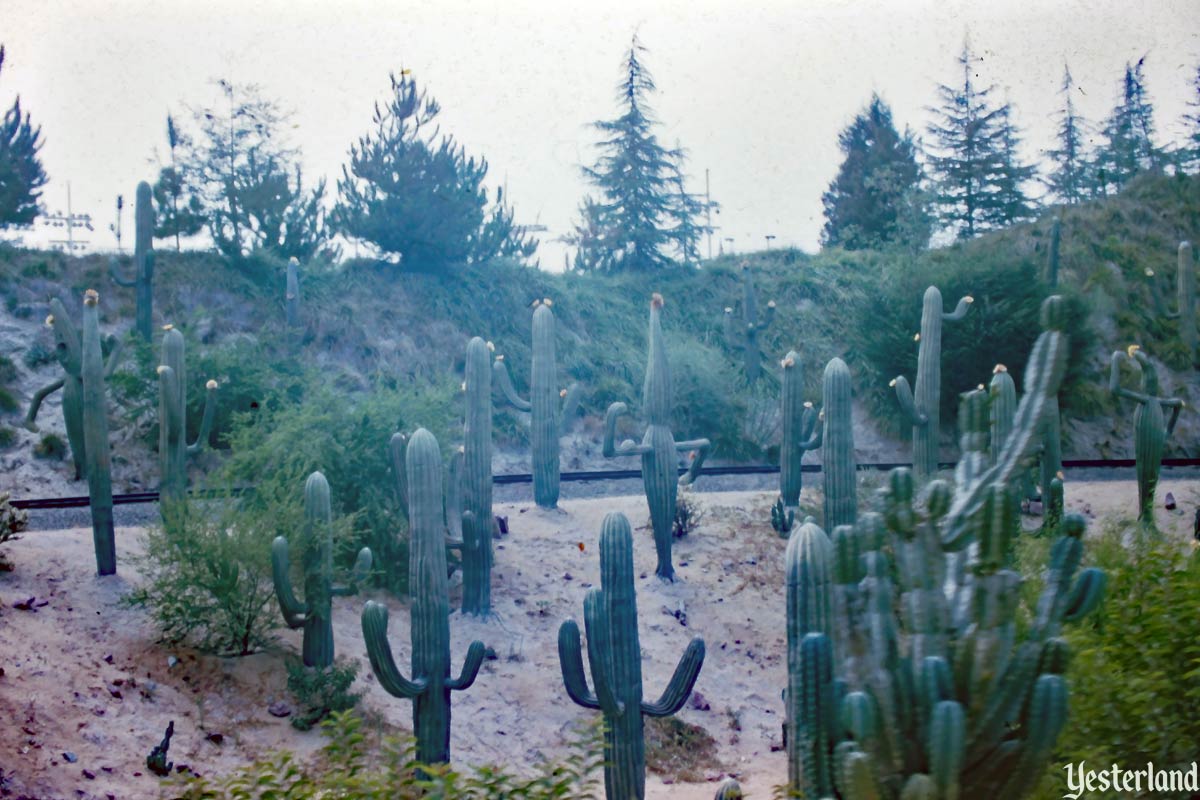
Photo, circa 1958-59 by Ruth Mills, courtesy of David Chapman Sagauros, some of which look strangely like people |
||||
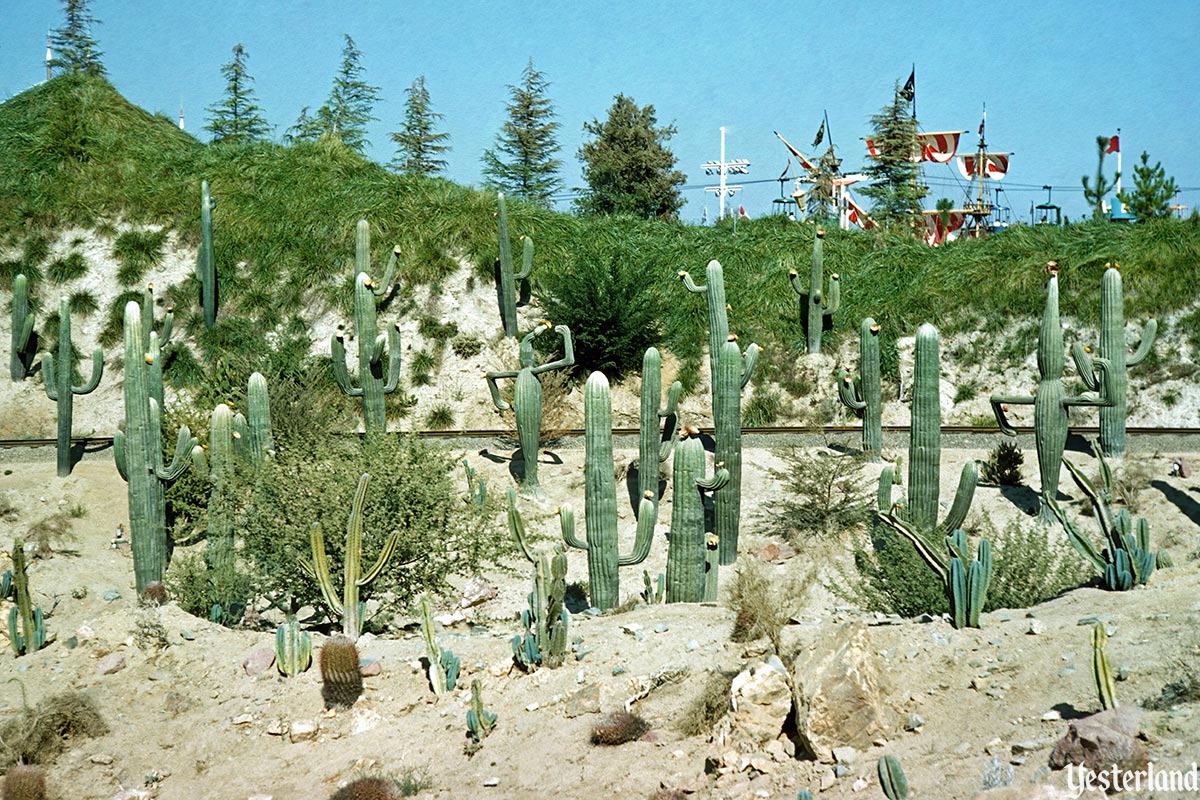
Photo by Charles R. Lympany, courtesy of Chris Taylor Captain Hook’s Pirate Ship, incongruously visible from the Living Desert |
||||
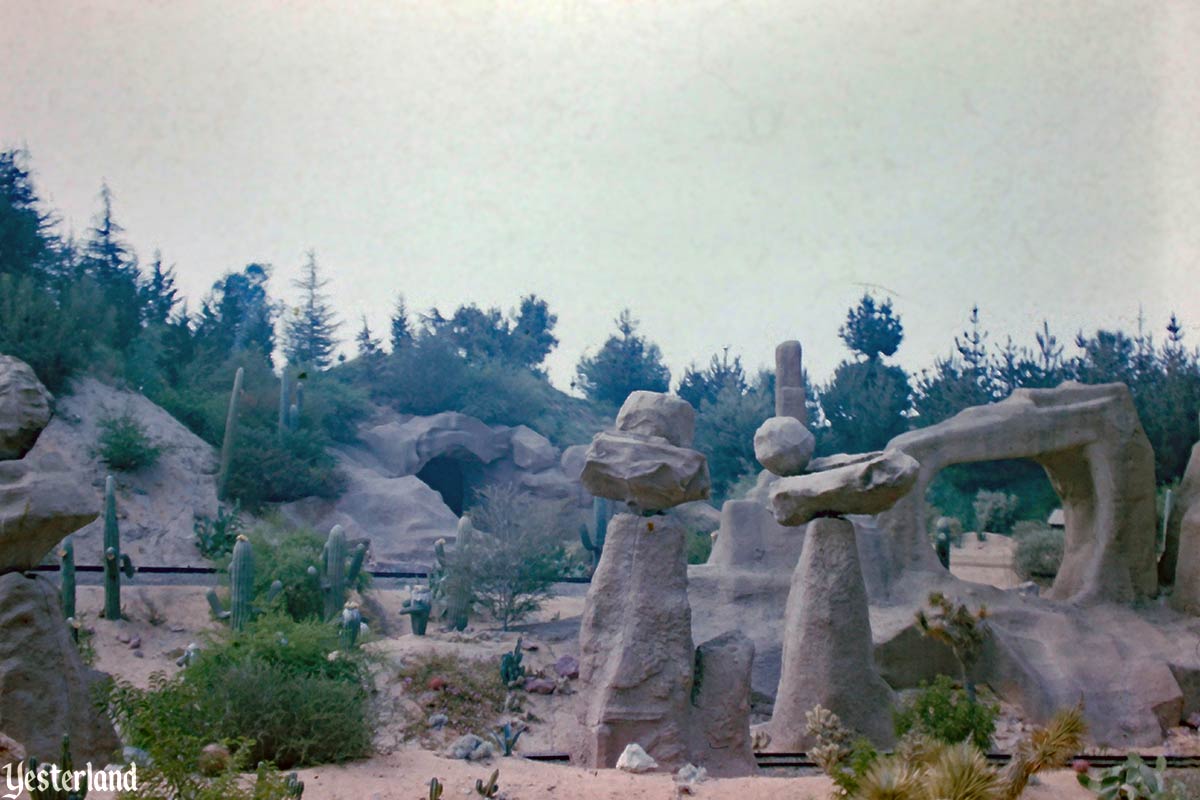
Photo, circa 1958-59 by Ruth Mills, courtesy of David Chapman Balancing rocks, rolling around, threatening to become unbalanced |
||||
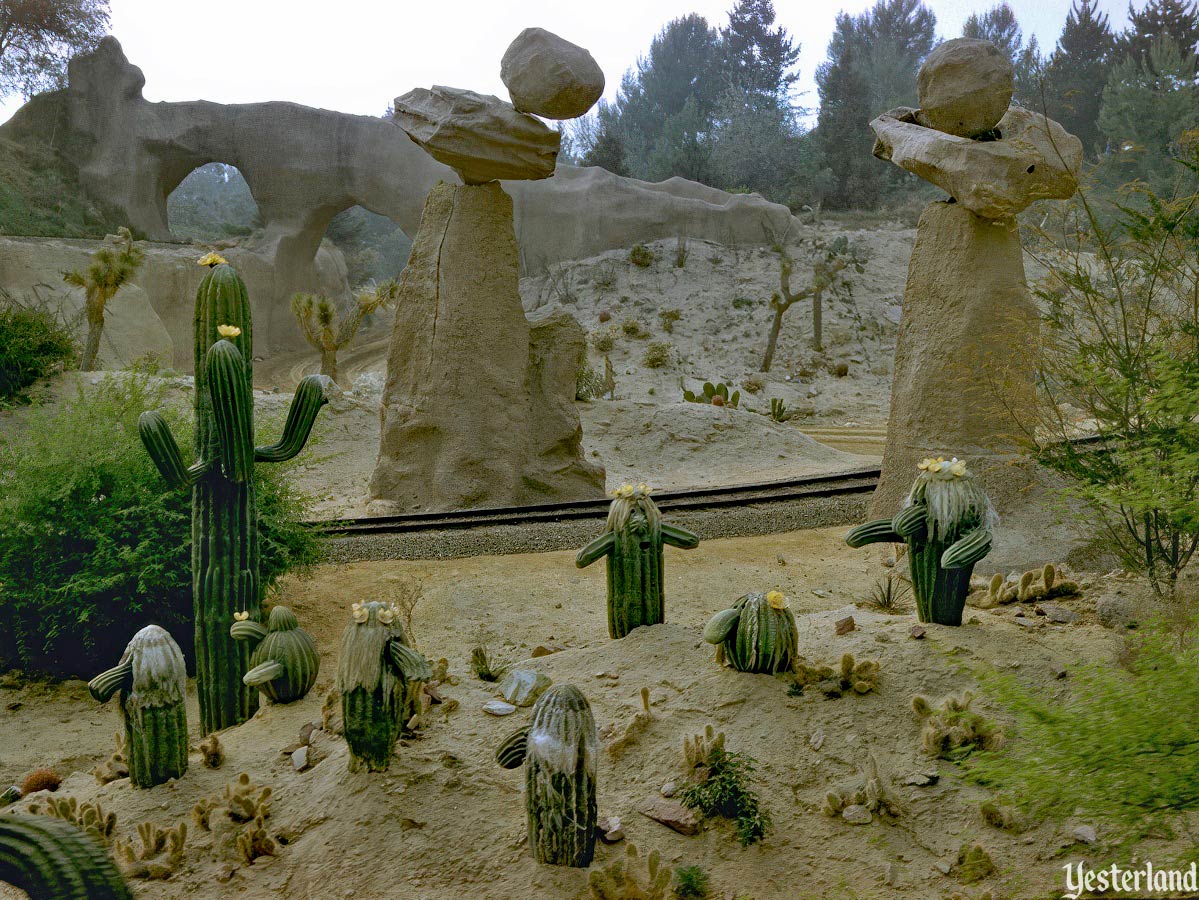
Photo by Merrill A. Garner, 1958, courtesy of M. Scott Garner Snow White and the Seven Dwarfs? |
||||
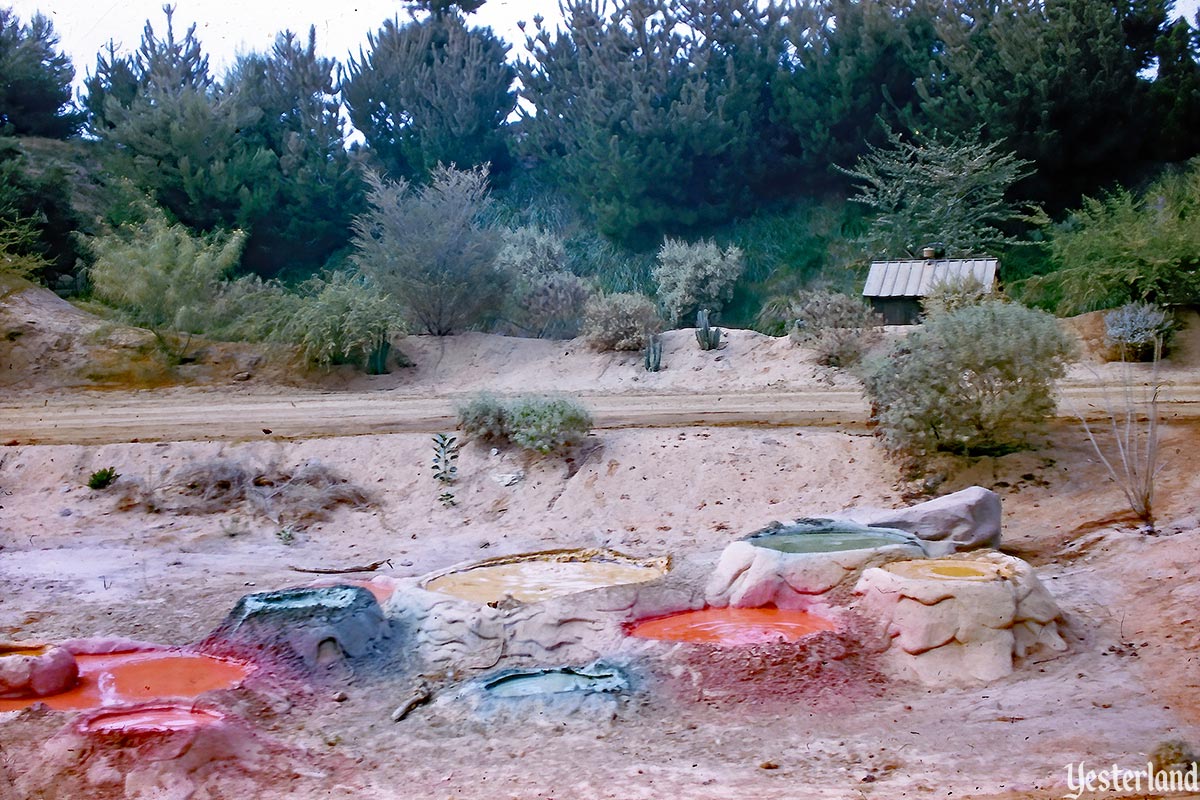
Photo, circa 1958-59 by Ruth Mills, courtesy of David Chapman Devil’s Paint Pots with brightly colored mud |
||||
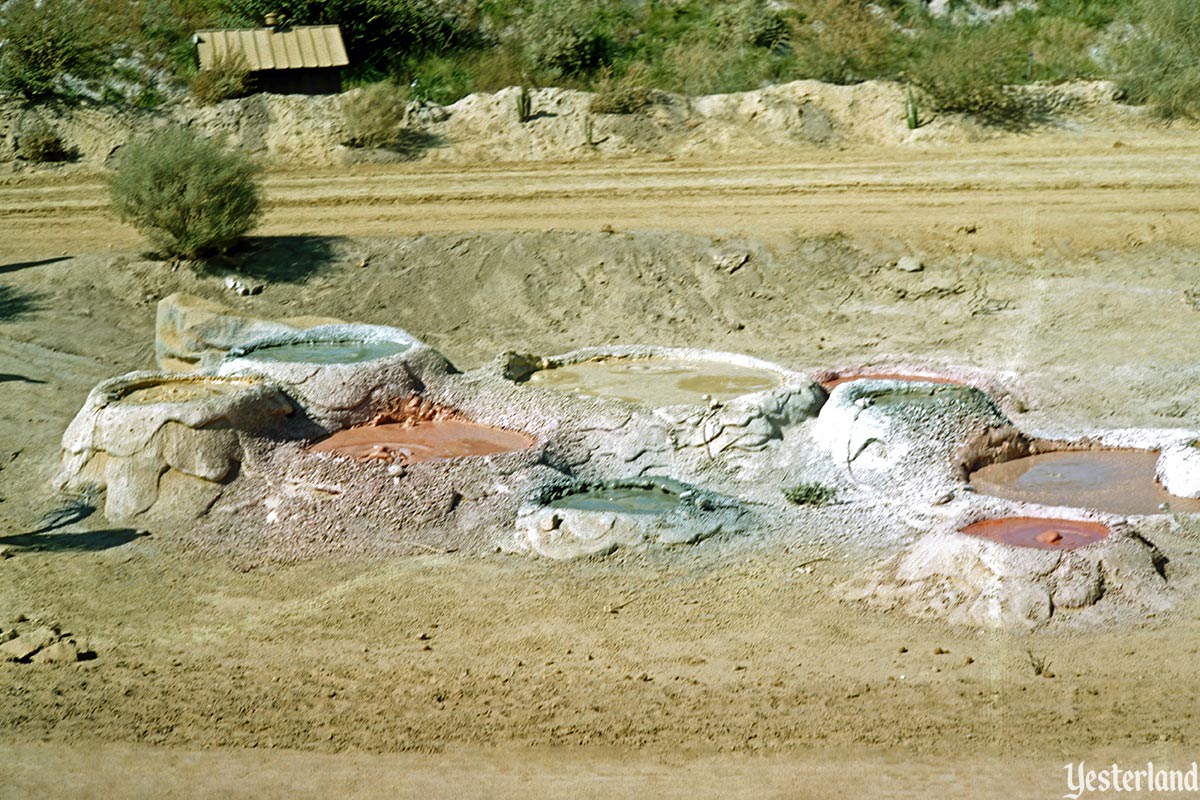
Photo by Charles R. Lympany, courtesy of Chris Taylor Devil’s Paint Pots with not-so-brightly colored mud |
||||
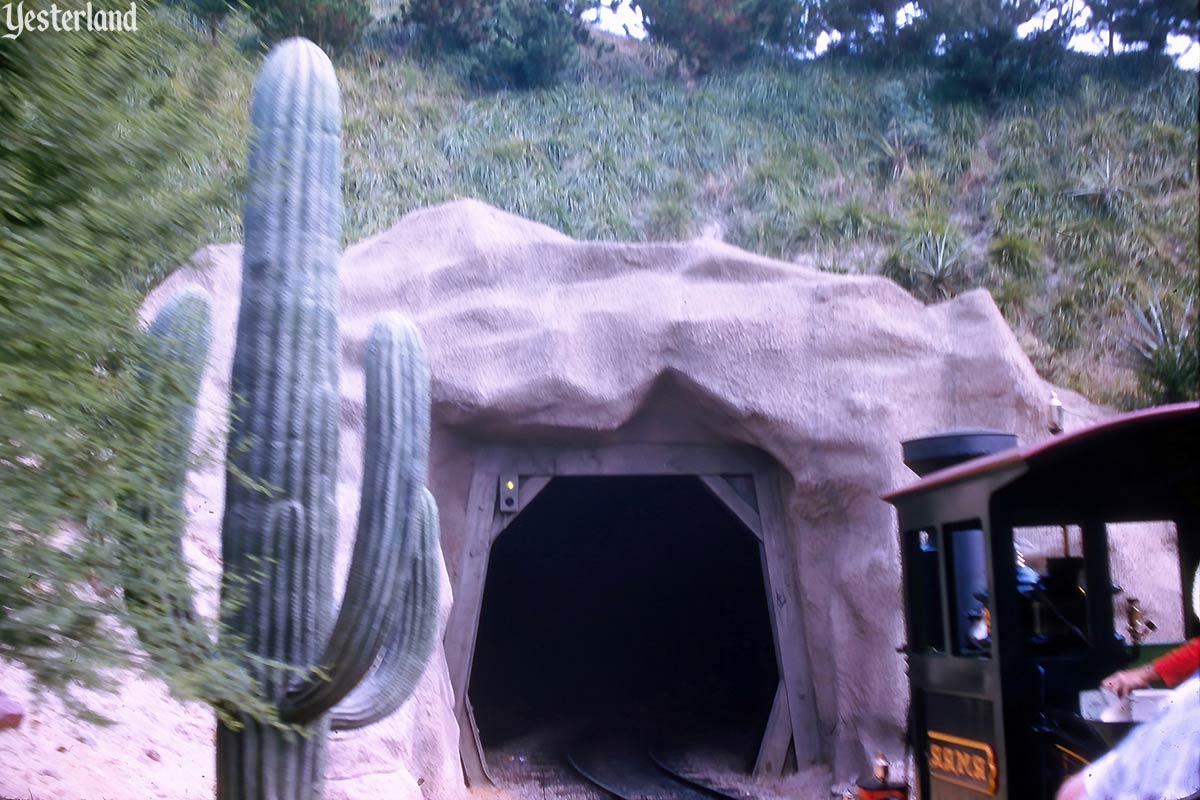
Photo, circa 1958-59 by Ruth Mills, courtesy of David Chapman Entering Rainbow Caverns |
||||
|
As your mine train traversed the desert, you might have seen the Rainbow Mountain Stagecoach or a Conestoga Wagon. They both use the same dirt road. At the edge of the desert, you might see a big train passing your little train; that’s the Santa Fe & Disneyland Railroad. And what was that up by Natural Arch Bridge? Those were the Rainbow Ridge Pack Mules. There sure are a lot of attractions at the Living Desert. But only the Rainbow Caverns Mine Ride takes you into beautiful Rainbow Caverns. The caverns are dark inside except for pools and waterfalls of brightly colored, glowing water. Soft music adds to the mood of Rainbow Caverns. Illuminated only by the glowing water, you can make out the stalagmites and stalactites of the cave. |
||||
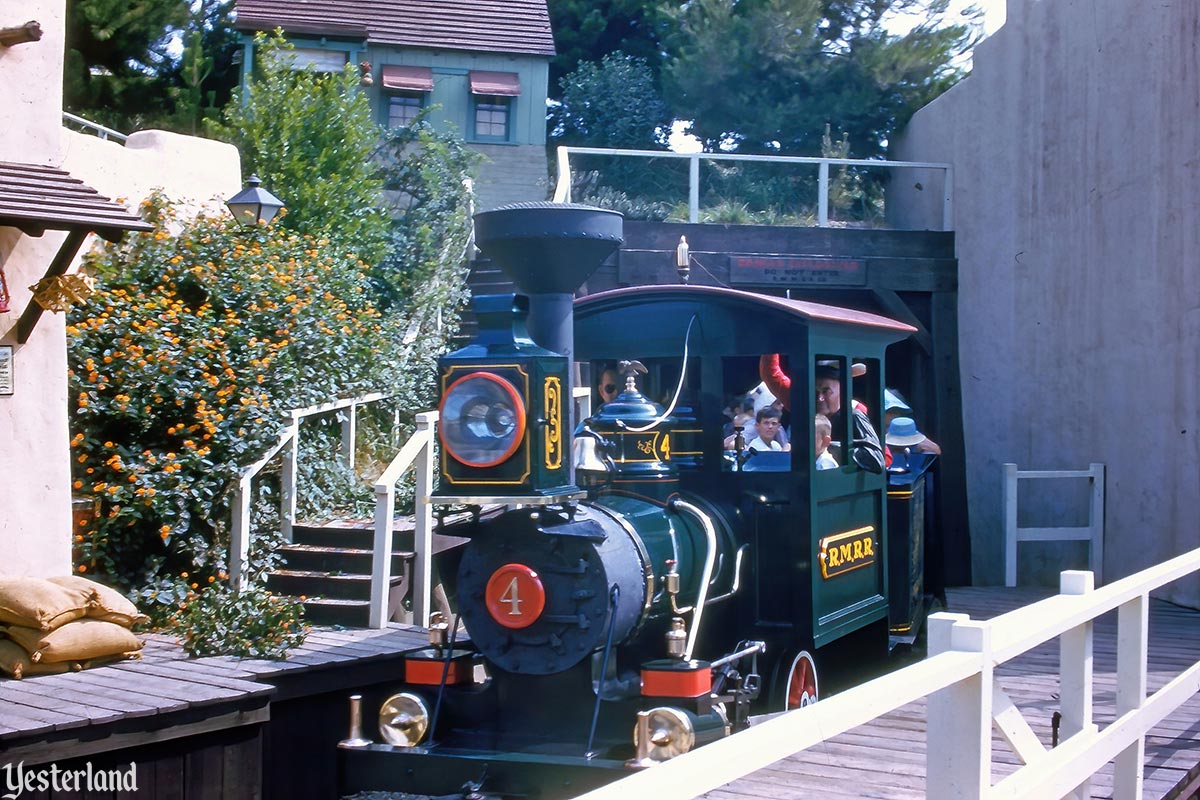
Photo, circa 1958-59 by Ruth Mills, courtesy of David Chapman Coming out of Rainbow Caverns |
||||
|
You’ve returned to Rainbow Ridge. After you exit from the train, visit Mineral Hall right next door. At first, the rocks in the display look ordinary. When the room darkens, the rocks glow in mysterious colors through the magic of black light. At Mineral Hall, you can buy a rock. Then you’ll always have a souvenir of this corner of Yester-Frontierland — and your friends will wonder why you have a rock on your coffee table. |
||||
|
|
||||
|
The Rainbow Caverns Mine Ride began operating in Disneyland’s new Living Desert in 1956. The Living Desert also served as the enhanced home of the Rainbow Mountain Stagecoach Ride, Conestoga Wagons, and Rainbow Ridge Pack Mules, which had all premiered with different names in Disneyland’s inaugural year, 1955. |
||||
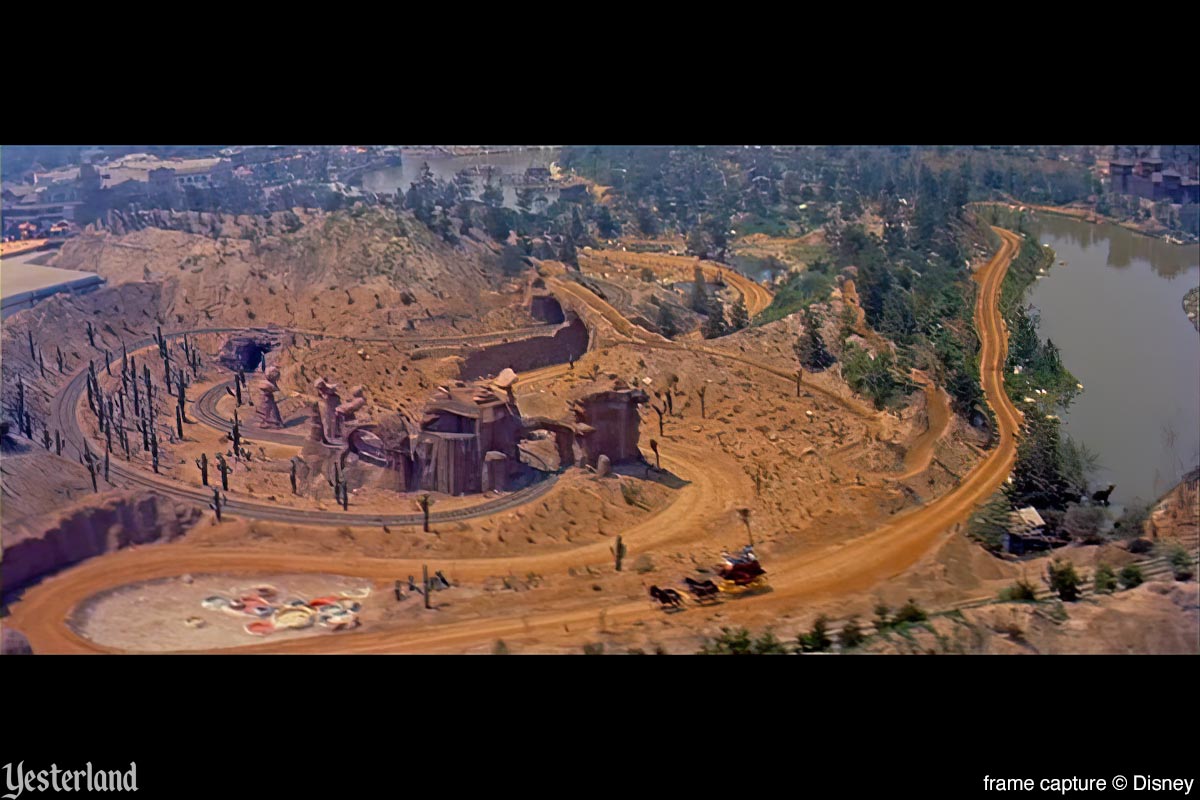
Screen capture © 1957 Walt Disney Productions Helicopter view of the Living Desert from the 1956 film Disneyland, U.S.A. |
||||
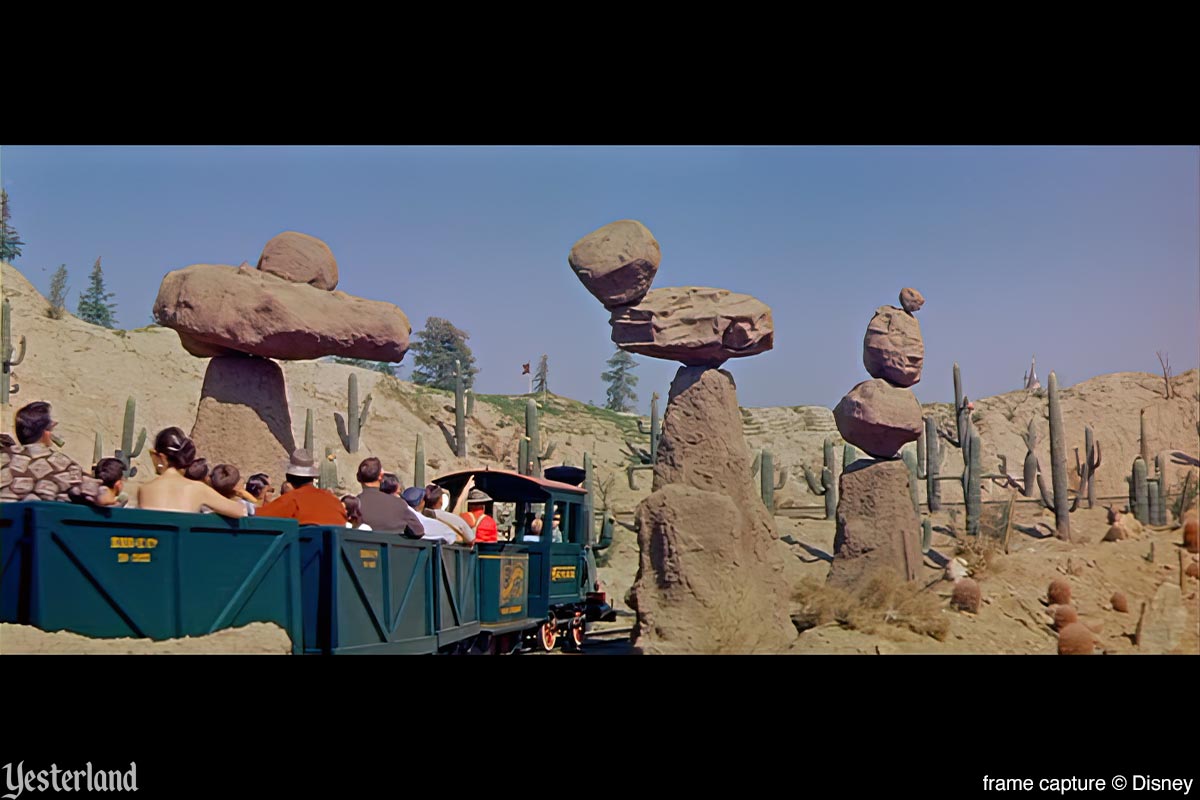
Screen capture © 1957 Walt Disney Productions Rainbow Caverns Mine Ride from the 1956 film Disneyland, U.S.A. |
||||
|
In 1960, the Rainbow Caverns Mine Ride was upgraded to become the Mine Train through Nature’s Wonderland, with cheerful yellow trains on a longer track. Rainbow Caverns and a portion of the Living Desert, enhanced with new scenes, remained part of the ride. They were joined by Bear Country, Beaver Valley, Olympic Elk, and the mighty waterfalls of Cascade Peak. More than 200 animatronic animals populated Nature’s Wonderland. The Living Desert had heen a Walt Disney True-Life Adventure (nature film) released to theaters in 1953. In a way, the new version of the ride was an early example of adding more Disney IP to an existing ride. Beaver Valley (1950), Bear Country (1953), and The Olympic Elk (1952) were all short theatrical films (about a half hour each) in the True-Life Adventure series. The Conestoga Wagons and Rainbow Mountain Stagecoach Ride attractions disappeared during this upgrade, while the mule ride became the Pack Mules Through Nature’s Wonderland. The Santa Fe & Disneyland Railroad (renamed the Disneyland Railroad in 1974) served as the northern border of the Living Desert. Railroad passengers enjoyed excellent views of the desert until the track was rerouted in preparation for the 1966 opening of “it’s a small world”. The tradition of a mine train in the same corner of Frontierland lives on in Big Thunder Mountain Railroad, which leaves from a newer version of Rainbow Ridge. |
||||
|
|
Click here to post comments at MiceChat about this article.
© 2024 Werner Weiss — Disclaimers, Copyright, and Trademarks Updated July 12, 2024 |
|||